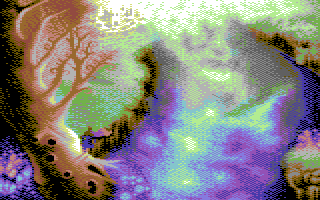Toy Mustang by
Navisto
Description
#3 at Buenzli 2010 gfx compo.Motivation
----------
I've long lusted for a nice radio controlled model warbird. Unfortunately, my son is just over 2.5 years old, meaning I'll lack the usual daddy's excuse to buy all the cool toys for another couple of years. In the meantime, the dream has to take a back seat, but at least I got to create a virtual Toy Mustang...
Steps:
------
-- ToyMustang-0-Source.png
This is the source image of the real deal, a P51 Mustang just after landing. It was taken at the Oldtimerflugtage Kestenholz in 2009.
-- ToyMustang-1-Cleanup.png
Removing a couple of disturbing objects in front of the plane as well as in the background provides an uncluttered view. There's a bit of color correction as well. Attention to detail wasn't required here, as all corrections happen outside the main area
of interest.
-- ToyMustang-2-FeatureEnhance.png
Enhancing the large scale features is the first major step towards a "miniaturisation" of the plane. This was done using the Topaz
Detail tool for convenience, but overlaying a high-pass filter with wide support and a bit of tweaking would result in a similar look
without the need for 3rd party plug-ins.
-- ToyMustang-3-Depth.png
The most effective way to turn any image into a miniature is to simulate the shallow depth of field that results when taking a close-up picture of a small object with a wide-aperture lens. This isn't quite as straight-forward as it might seem. A real camera can look slightly behind the edges of a real object, with an aperture that isn't round. Fortunately, Photoshop includes a lens simulator that takes a depth field as the input and creates a decent approximation of the real effect. The picture shows this depth input. Things get messy around the moving propeller though, so there was a lot of manual retouching required around that area.
-- ToyMustang-Final.png
The result. Too bad I can't control it using my radio...
Details
Submitted by: CONS
- Page loaded: 1575
- Rating: 8 (1 Votes)
Tags
Votes
ALiEN^bf(8)
Comments

